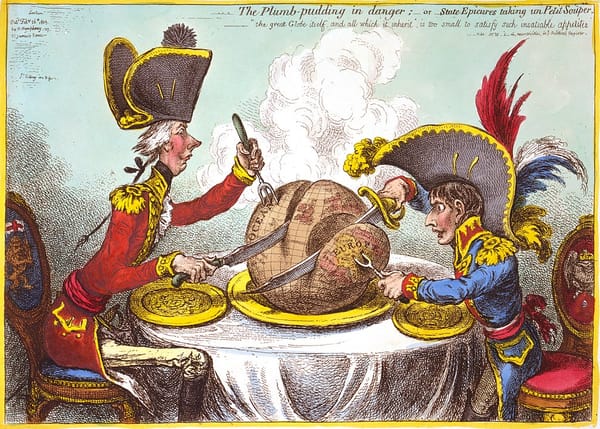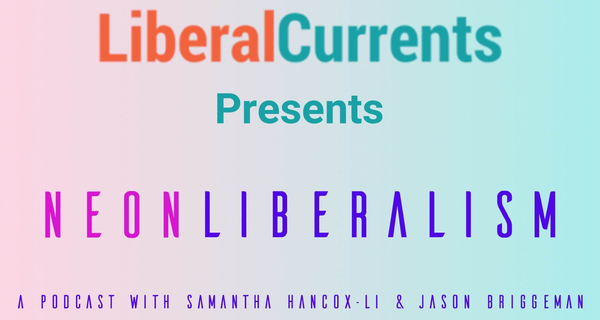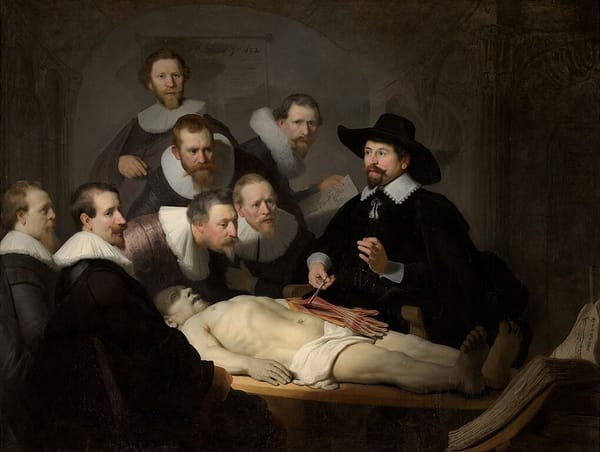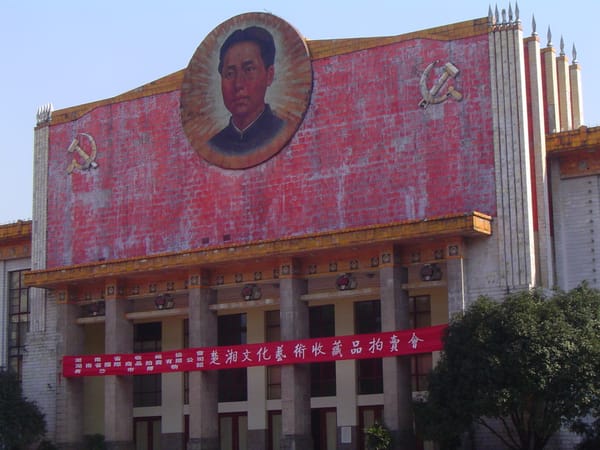NIMBYism Is Segregation Persisting
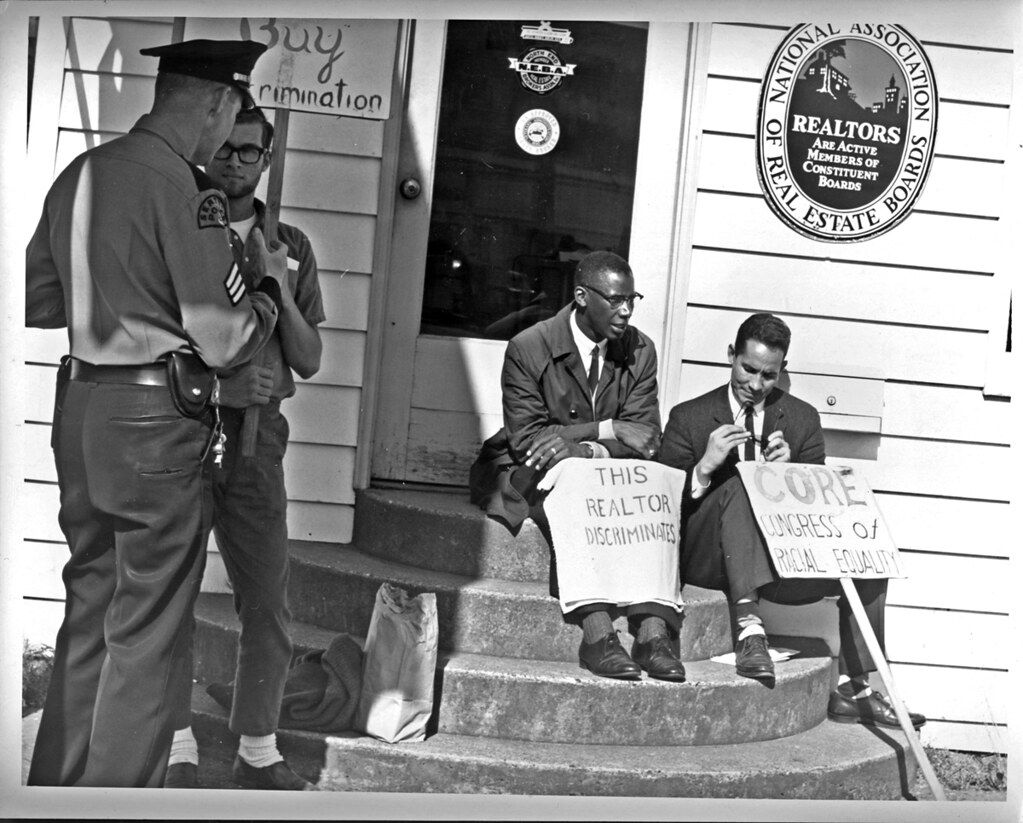
In a hot convention hall in Philadelphia in 1788, the last member of the Constitutional Convention set his pen to the page and sealed in ink slavery as one of America’s foundational institutions. On Capitol Hill in 1866, after decades of bloody struggle on the battlefield and off it, the Fourteenth Amendment was passed by abolitionist Republicans over President Andrew Johnson’s opposition as part of the great project of Reconstruction: the remaking of the nation and the Constitution on a new foundation of racial equality. A decade of guerrilla warfare and economic panic later, in some unknown back room in Washington DC, the corrupt bargain politely known as the Compromise of 1877 was agreed on, elevating Rutherford B. Hayes to the Presidency on the condition that he end Reconstruction. And the long shadow of Jim Crow fell across America.
The manifestations of Jim Crow were everywhere in America. Jim Crow was present in whites-only drinking fountains, whites-only lunch counters, whites-only seating on buses and trains. Jim Crow was present in sun-scorched fields of cotton and tobacco and the generations of debt-trapped sharecroppers who labored there. Jim Crow was present in the miasma of violence and brutality that permeated our segregated society and occasionally burst into life in lynching and massacre—Tulsa, Atlanta, Wilmington, Rosewood, and others beyond naming—the more than four thousand public murders committed by “person or persons unknown” from New York to California.
But Jim Crow was more than mere animus, not merely a collection of spontaneous racism, but a system of political economy that sustained itself for nearly a century. The ideas developed by Douglass North, John Joseph Wallis, and Barry Weingast in their Violence and Social Orders can be used to understand the system and the logic of Jim Crow—a system and a logic shared by many social orders across human history. These “limited access orders” are built on a combination of social exclusion and economic rents. Social exclusion means that the powerful exclude the powerless from various aspects of social participation—especially access to political organization and economic success. This exclusion inherently generates economic rents—per Beth Stratford, rents are “unearned incomes arising from control over scarce or monopolised assets… rather than labour or sacrifice.” These rents are then (unevenly) distributed across the ruling coalition. This both ensures their commitment to maintaining the system and provides them the resources to continue enforcing the exclusion on which it is based—violently, if necessary.
This analysis reveals how Jim Crow sustained itself over generations. It excluded Black Americans from almost every aspect of social life: from education, employment, finance, politics, justice. As such, this generated unearned rents for white Americans: less competition for jobs, political power, legal impunity, a pool of cheap labor (for farming, for service, for domestic service), and critically the psychic wage of hierarchy: the sure knowledge that the lowest white man was still higher than the highest Black man. These various rents worked together to enable white Americans to in turn maintain the exclusion that generated them. The now-notorious 1921 Tulsa Massacre illustrates this dynamic. A mob of whites descended on the Greenwood neighborhood of Tulsa Oklahoma, burning the neighborhood to the ground, killing between 150 and 300 Black men, women, and children, injuring hundreds more, and leaving more than ten thousand people homeless. Not coincidentally, Greenwood, known as Black Wall Street, was at the time one of the wealthiest Black communities in the nation. Also not coincidentally, not a single person was ever prosecuted for the massacre. In other words: the white elite acted to enforce the exclusion of Black Americans from economic participation and success, and was enabled to do so by the various rents and privileges the system afforded them.
Citizen Homeowner
In 1964 in a televised conference room in the White House, after decades of bloody struggle by the civil rights movement, President Lyndon Baines Johnson signed the Civil Rights Act into law, formally ending Jim Crow and de jure racial segregation across America. And yet since that moment a different system racial hierarchy has come to grip our nation. This system had no one author, no one beginning, no one law. It was built on tactics pioneered during Jim Crow, like redlining and exclusionary zoning. But it survived Jim Crow’s end, and since then it has crept into every level of American society, from local city councils to the Federal Reserve. I will call it Citizen Homeowner, and it is the system we live under today.
The manifestations of Citizen Homeowner are everywhere in America. Citizen Homeowner is present in Connecticut homeowners packing a Wednesday-afternoon town hall, taking their turns at the microphone to scream about the devastation threatened by a single new apartment building in the village. Citizen Homeowner is present in local officials from Harlem to Haight-Ashbury fighting relentlessly against new multifamily development in their districts. Citizen Homeowner is present the California exurbs engulfed in wildfire and the eight-lane highways that made them possible. Citizen Homeowner is present in the “maestro,” Alan Greenspan, droning on about the great work of maintaining Americans’ home equity even as he sleepwalked the nation into the worst economic catastrophe since the Great Depression. Citizen Homeowner is present in the tents under the bridges, the two-income family living out of a car in a rest stop parking lot, the bilious op-eds demanding the homeless be cleared away for the sake of “normal” people.
As with Jim Crow, the concept of a limited-access order reveals the political economy underlying these disparate phenomena. For the fundamental truth about modern America is that by controlling access to housing, you thereby control access to numerous other forms of social, economic, and political participation. Where you live determines where your children go to school. Where you live determines what jobs you have access to. Where you live determines what elections you can vote in—and how much that vote matters. Where you live—and whether you own that place of residence—determines how rapidly you accumulate wealth. The hinge of Citizen Homeowner is exclusion: excluding vast swathes of Americans from accessing these forms of social participation by ensuring that housing—especially in the most highly desirable neighborhoods—remains scarce. This scarcity is enforced by a wide array of regulations: zoning laws, building codes, parking minimums, endless review processes, and others. These regulations serve to make it difficult and expensive to build housing in desirable neighborhoods in the quantities desired. And this exclusion generates rents in all these domains that accrue to the homeowning elite: first and foremost home equity, but also exclusive schools, political power, and high-paying jobs. These rents solidify support for the Citizen Homeowner regime and simultaneously enable its elites to maintain that very exclusion.
The ongoing city secession movement in Buckhead illustrates these dynamics. Buckhead is a highly desirable section of Atlanta, Georgia: the median listed home price in Buckhead is $842,000, compared to the $474,000 of Atlanta generally. These land rents are preserved by the artificial scarcity of housing in Buckhead, driven by decades of single-family only zoning laws, among other anti-development measures. In 2021 in response to the city council’s proposal to upzone Atlanta generally (and certain portions of Buckhead), homeowners formed a political action committee with the aim of seceding from Atlanta. Among other things, this would enable them to split off their tax base and their school district from Atlanta’s generally. In other words: it would increase the exclusivity of the specific forms of access their homeownership provides, including to politics, education, and wealth. Unsurprisingly, their ability to sustain this state-level political campaign is itself tied to the wealth and social legitimacy their homeownership has bought them.
I haven’t mentioned race yet, and some readers might argue that I’ve unjustly tarred Citizen Homeowner by associating it with Jim Crow. So let me be upfront. Is Citizen Homeowner a better system than Jim Crow? Yes. Is it less violent? Yes. Less exclusionary? Yes. I do not deny that Citizen Homeowner is a marked improvement on what came before—just as Jim Crow was a marked improvement over chattel slavery. These are not high bars. I won’t speculate about the plan or intent of those who built Citizen Homeowner, because proving such is not only tedious, but besides the point: the ground truth is that Citizen Homeowner is built on the same political economy of rents and exclusion, and functions to maintain the same racial hierarchy.
Let’s consider the facts. Yes, nominally, anyone can buy their way into the homeowning elite. But in a world where home equity is always increasing faster than wages or inflation, it becomes increasingly hard to make that purchase, especially given that housing itself is necessary for access to both high-paying jobs and high-return assets. Unless, of course, your family is already part of the homeowning elite, capable of passing on their membership to you in the form of generational transfers of home equity. Such a strange coincidence it is then that at the end of Jim Crow, most of our nation’s wealth—and most of its best housing—was owned by white Americans. And of course no reparations were ever paid to those who had been excluded. Perhaps this alone might be enough to explain the persistence of the immense racial wealth gap, with the median white family owning ten times as much wealth as the median Black family.
But the truth is that the exclusion of Black Americans from good housing continues to be actively maintained at every level. It is maintained by the direct actions of countless racist loan officers, property assessors, realtors, and sellers. This is explicit but all too often invisible racism on a scale that shocks the conscience—I recommend a glance at the stories linked for a sense of the magnitude of wealth theft we’re talking about here. But it goes beyond this. Because social access is tied to housing, it is possible to manipulate racial group’s access and success by manipulating housing in a facially race-neutral fashion. The siting of highways (and other noisome infrastructure) illustrates this dynamic clearly. Such infrastructure can destroy the worth of certain housing (demolished black neighborhoods) even as it magnifies the worth of others (white suburbs). Infrastructure siting is not the only method, of course—Danielle Purifoy and Louise Seamster refer to the various processes of “creative extraction” by which patterns of public investment and disinvestment manipulate property values.
Beneath the surface of Citizen Homeowner is the long shadow of Jim Crow, lingering.
Housing Abundance
North, Wallis, and Weingast’s analysis does not merely illuminate the structure of Citizen Homeowner. It provides a roadmap for dismantling it. They contrast limited access orders with open access orders: societies that are structured around enabling all citizens to access social participation on an impersonal basis, and especially access to economic and political participation. Economic rents of course can exist in such systems—but the very existence of the rent gives everyone else a strong incentive to enter that area of economic life and get their slice of it. And this process of increasing participation itself erodes the rent in question. Put in more practical terms: Citizen Homeowner is built on the rents generated by exclusive access to housing. We can begin to burn it out at the root simply by opening access to housing. Open access encourages more people to enter highly-desirable housing markets, ultimately eroding the very rents that sustain the system, and replacing them with greater shared prosperity. The phrase “open access to housing” is a bit obscure. In practical terms, it means two things: first, YIMBY-style reforms of zoning and building codes; second, social housing programs.
YIMBY—”Yes In My Back Yard”—analysis begins from the fact that housing in America is kept artificially scarce by a wide variety of regulations. These include single-family only zoning, but also minimum parking requirements, floor-area ratio requirements, community review processes, badly designed environmental laws, outdated building codes requiring large buildings to be built in expensive and inefficient ways, and various others. All of these regulations mean that it is time-consuming, expensive, and in many cases simply illegal to build dense housing in desirable neighborhoods. By reforming or eliminating these anti-housing regulations and opening access to the housing market, we can create a strong incentive for individuals and organizations to produce more housing supply. The value of each individual unit in a fourplex might be lower than a single-family home built on the same lot—but the value of the whole fourplex is substantially higher. By creating more housing in these desired neighborhoods, we can undercut the exclusion they are built on and eat away at their unearned rents.
The Minneapolis 2040 Plan provides a good example of this dynamic. In 2018 the city council passed a suite of housing reforms. They legalized duplexes and triplexes in all previously single-family-only zones, eliminated mandatory parking minimums, upzoned transit corridors, and loosened numerous other anti-housing and anti-development laws. As a result, housing construction is booming across Minneapolis, and real rents are down across the city—even as rents increased dramatically nationally. This is the power of the open-access order at work: you can make money by providing other people with valuable goods and services they very much want—such as, for example, high-quality housing close to good jobs and good schools.
But we need more than regulatory reform. If access to housing remains such a fundamental method of access to all other forms of social participation—and it does, just ask a homeless person—then we must ensure that people do not fall off the bottom of the ladder. This is a matter of basic human right and human need. It can also be a matter of cynical calculation, if that is easier for you: the cost of social services created by homelessness is substantially higher than the cost of simply housing the homeless. And even aside from genuine homelessness, severe poverty can force individuals into inferior or exploitive housing situations. There are many proposals for how the state might step in here; I personally favor a public developer of mixed-income social housing on the Viennese model. While there remains debate about the details, the deep point of agreement is that maintaining open access to social participation for all requires maintaining access to housing for all—even the least among us.
The Prison of the Mind
This brings us to the objection, the one you hear over and over from NIMBYs, Citizen Homeowner’s ideological vanguard. Doesn’t this amount to just a transfer of wealth—these rents I’ve been speaking of—from incumbent homeowners to newcomers? Don’t incumbent homeowners have a right to defend what they’ve worked so hard to build—their neighborhood, their home equity, their way of life—from ravaging developers? Won’t all this new housing simply destroy the nice things that brought people there in the first place?
This mindset is common—it’s false too, and we’ll come to that—but it’s common and it’s important to understand why. The limited-access order is a prison of the mind as much as it is a prison of the body. This begins from the basic economic fact of limited-access orders: a system built on exclusion and the rents generated thereby is not a system that provides for long-run economic growth. Elites obsess over maintaining exclusion and their unearned rents, rather than production or innovation. The excluded likewise have little incentive to be productive, because any extra productivity just gets diverted into elite rents. The world curdles into the question of who gets excluded and who gets the (limited) rents, and the result is long-run economic stagnation—a zero-sum game. These material facts are inevitably accompanied by a zero-sum mindset: “any other’s gain must be my loss.” And this mindset is constantly reinforced by the psychic wage of hierarchy: that warm feeling you get in your heart, knowing that you’re a hardworking homeowner making your own way, not like those lazy drug-addicted criminals you see camped under the overpasses on your drive to work.
We have built a world in which your home is your fortress, and it’s also your health insurance, and it’s also your rent control, and it’s also your college fund and your retirement fund and your rainy day fund and everything else together. Your home is your way of life, and you feel a real terror at anything that might threaten that. And this mindset affects even those who are not at the top of the ladder: everyone knows housing is the ticket to success, and we are all laser-focused on making sure we get our ticket. The white picket fence is an aspiration that has colonized the imaginations of even those who have little hope of ever achieving it.
This isn’t some bizarre modern distortion of the human mind. This is the mindset that ruled the world since the development of agriculture somewhere between five and ten thousand years ago. Land was far and away the most important factor of production. And there was only ever so much of it: for one to have more, another must have less. Long-run per capita economic growth averaged zero percent. It was a zero sum world. It was only not much longer than two hundred years ago that a new truth bent the course of human history: open access is better for everyone, even the elites. This is the weird truth that reshaped human history, and it applies to housing as much as anything else.
Scarce housing might drive up your home equity but it doesn’t actually produce anything. It does not create any new good or service in the world from which people might benefit. In fact, it strangles the creation of new goods and services, by pricing people out of the dynamic cities where economic growth happens. Every person who can’t afford to move to Silicon Valley and is left stuck in some dead-end town is less productive and as a result we are all poorer—the excluded worker, who might make a better living providing useful goods or services, and the person who might buy those services. Every kid stuck going to a bad school in a bad neighborhood because their parents can’t afford housing elsewhere is personally deprived of the benefits of a better education—and so is everyone else. The virtuous cycle of the open access order, the increased productivity and innovation of cities itself feeding further innovation and dynamism, is being choked off by Citizen Homeowner. When housing in your city has become so expensive you can no longer hire people to teach your own children, that is not good for anyone. To put a hard number on it: it is estimated that the anti-housing policies of just New York City, San Jose, and San Francisco have together blown a two-trillion dollar hole in the American economy.
Conclusion
Slavery casts a long shadow. Our enduring system of racial hierarchy can seem insurmountable, Citizen Homeowner entrenched in too many other systems to overcome. The ever-increasing concentration of economic growth (and therefore jobs) in cities is a tide that has been rolling in for three hundred years, and no policy and no politician can stop it. Local schools funded by local property taxes, local governments elected by local elections: these are likewise baked deep into the American constitutional order. And the inner reaches of the human heart have ever been resistant to government policy—as are the racist hearts of all those realtors and loan officers and property assessors. Thankfully, North Wallis and Weingast suggest a way to deal with this system of exclusion and rents and racial hierarchy without needing to touch any of that: open access to housing. The end of housing exclusion gives private actors strong incentive to compete for those rents by building new housing and at the same time enables the public construction of social housing.
I don’t mean to suggest that housing reform is a miracle pill that will solve all of society’s ills: it manifestly will not. What it is another step forward in our long and halting progress towards a truly free and equal society: a society in which everyone regardless of race color or creed has the opportunity to access fundamental forms of social participation: a well-paying job, electoral participation, good schools for their children, parks and public transit and other amenities, and a secure place to lay their head at night.
Featured Image is Fair Housing Protest, 1964

